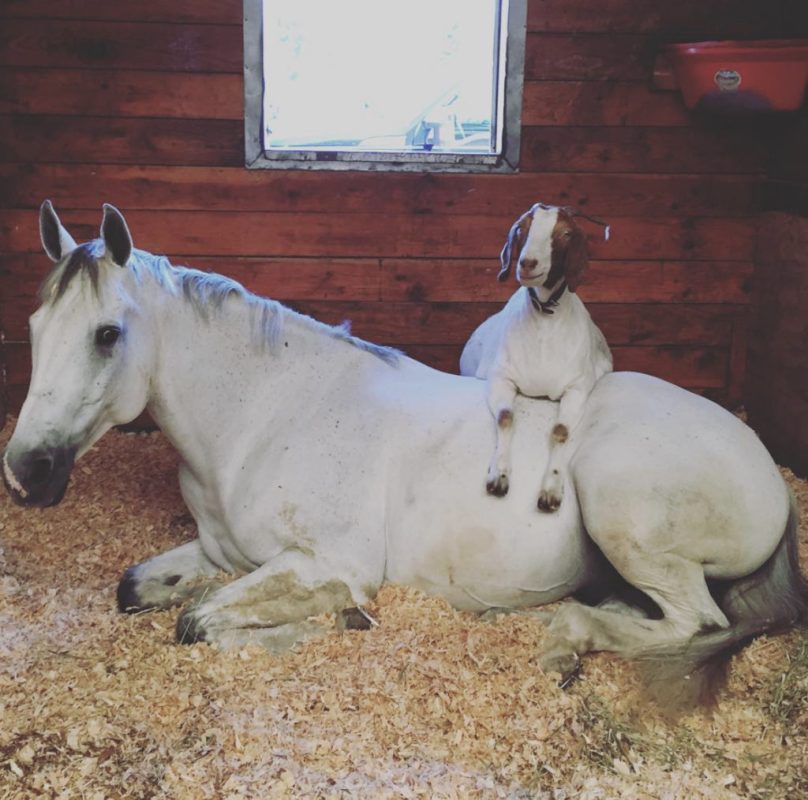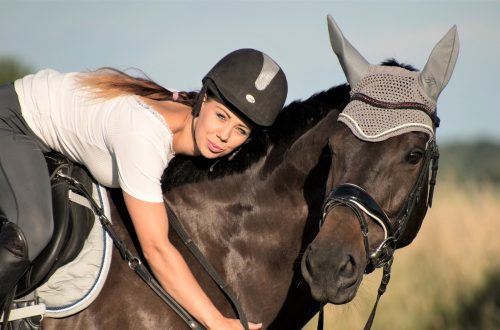
What to do if the horse is goaty?
What to do if the horse is goaty?
Your horse is goaty. Her back rises under you. Perhaps the horse is waving its head and tail. It is possible that at the same time she rushes around the arena at a speed uncontrollable by you …
If at the same time you feel sticky fear, remember, you are not alone. Many riders have faced this situation. However, it is necessary to treat it, rejecting feelings.
Three steps will help you:
1. Protective leg position.
2. The body is slightly behind.
3. Looking ahead
So let’s look at them one by one in a little more detail.
1. Protective leg position
When we ride, under normal circumstances our leg (lower leg below the knee) should be under us, as if we were standing on our own two legs. The legs under the body are one of the foundations of supporting the body while riding. But, if the horse suddenly decides to play pranks, everything changes. When the horse’s hindquarters change position from horizontal to more vertical, it also makes sense for your leg to change position to support you in this new, fleeting, but awkward position. The trick is to get into this position before your horse does anything. You must immediately put your heels down!
2. Body slightly behind
There is three reasonsfor which this position of the body is a vital factor in allowing you to stay in the saddle and “glue” to it.
2.1 You will be using your abdominal muscles to adjust to the momentum your horse will create by bucking and batting. It’s good if you’re in athletic shape and your core allows you to handle the situation by leaning back slightly and opening your chest. This position will in any case help you to keep your body in line when the horse bucks.
2.2 You will need to get your horse to raise his head as soon as possible. When your horse goats, he uses his body like a catapult (the front goes down and the back goes up). If you can lift the head and neck of the horse, then the chances of avoiding goats increase.
2.3 When you use your core muscles in addition to moving your legs slightly forward, you will look like a man in a tug of war from the side. If we remember what it looks like, we understand that by maintaining this position, a person uses his entire body, and not just his hands, to pull. Do not pull the horse with your hands! Just change the body position!
3. Looking ahead
It sounds so simple that it’s probably the last thing you think of. But this is what can be the deciding factor when it comes to whether you fall into the mud, or stay in the saddle while your horse is goat.
When you look forward, you naturally keep your shoulders open and turned, without leaning your body forward into the horse’s neck. You also help your balance by looking at something far away. Another advantage of looking ahead is to see where you can direct your horse to distract him and bring him back to himself. Simple but effective.
So, the next time your horse decides to show you how “sporty” he can be by showing off his goats, push your legs forward, engage your core and lean back a little, look forward.
The quickest way to stop the goats is to raise the horse’s head and send it forward, asking it to do something else.
Sit in the saddle with confidence, think about the next step. The main thing is not to worry about what is happening, but to move the horse forward, switching his attention from the goats to the continuation of the work.
Lorna Leeson (source); translation Valeria Smirnova.





